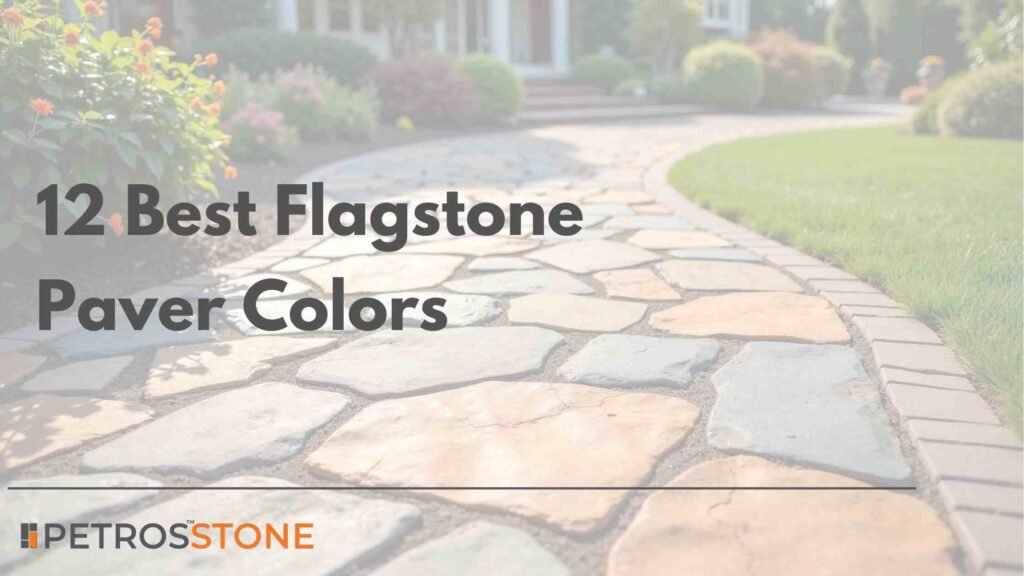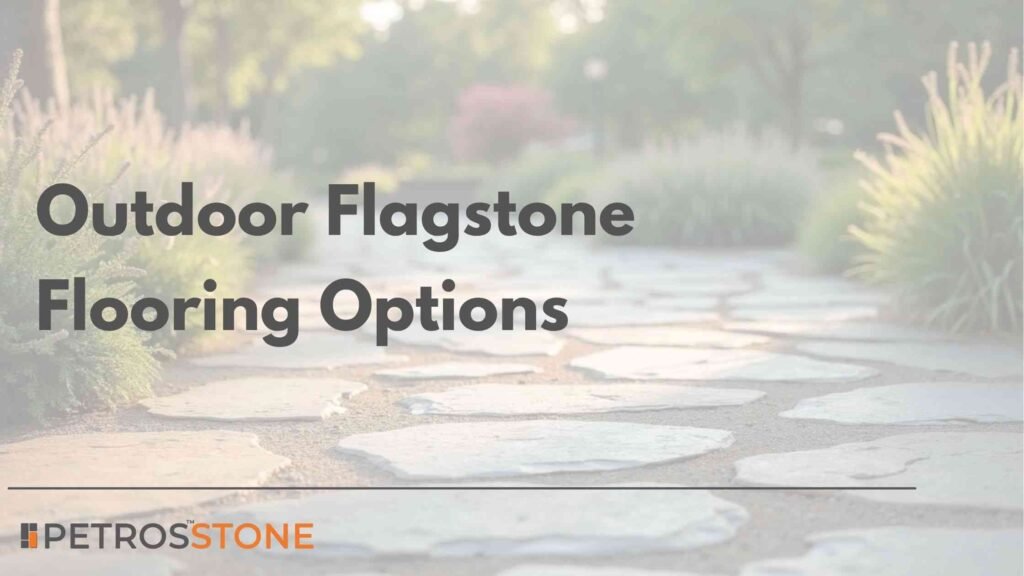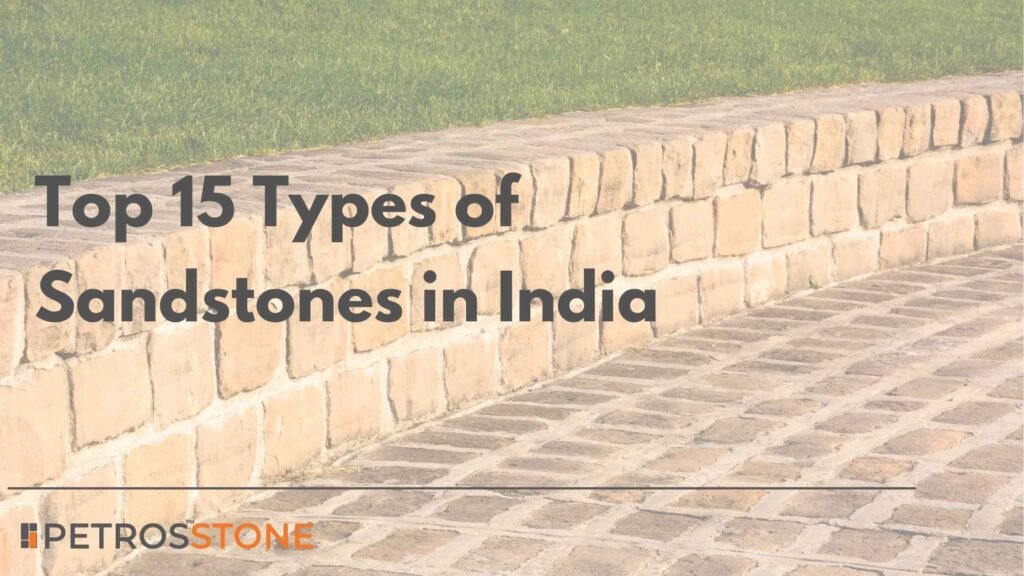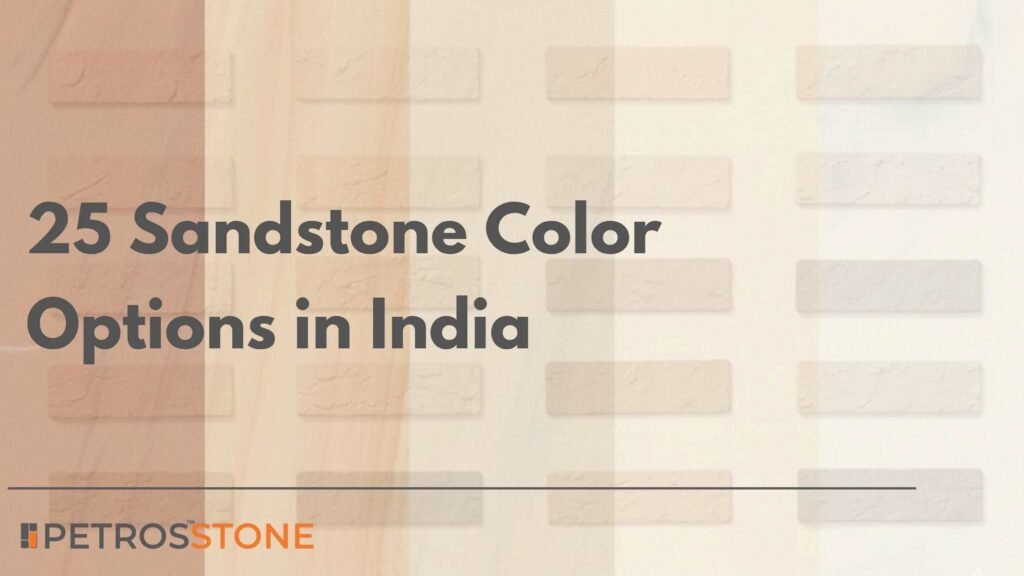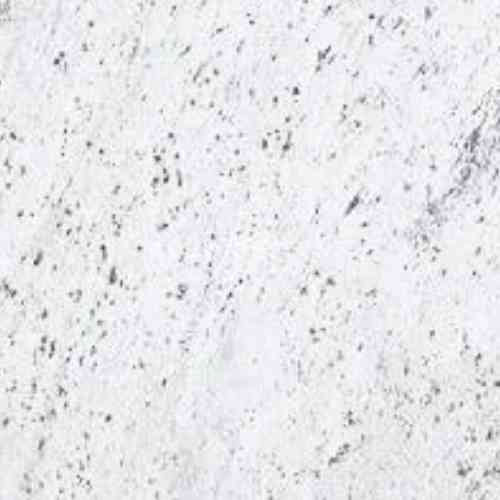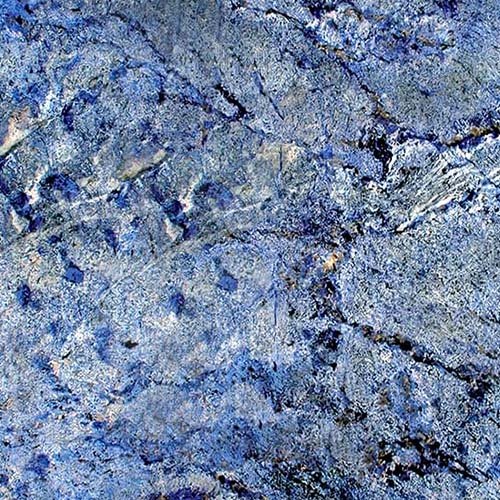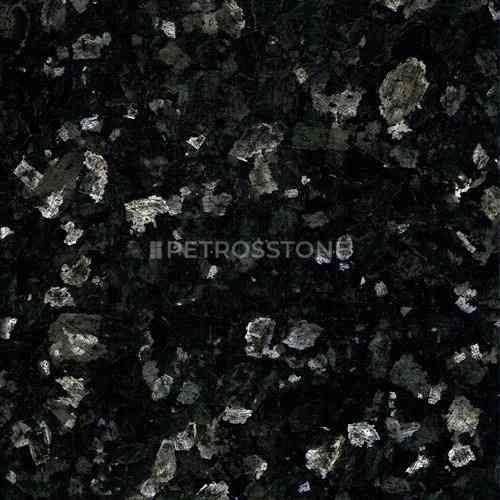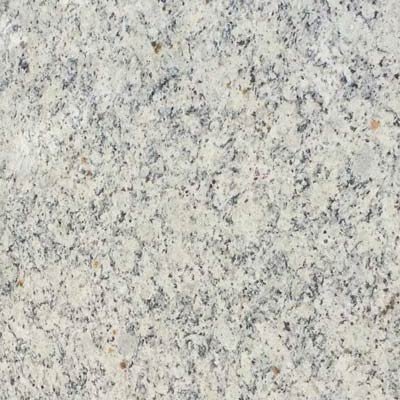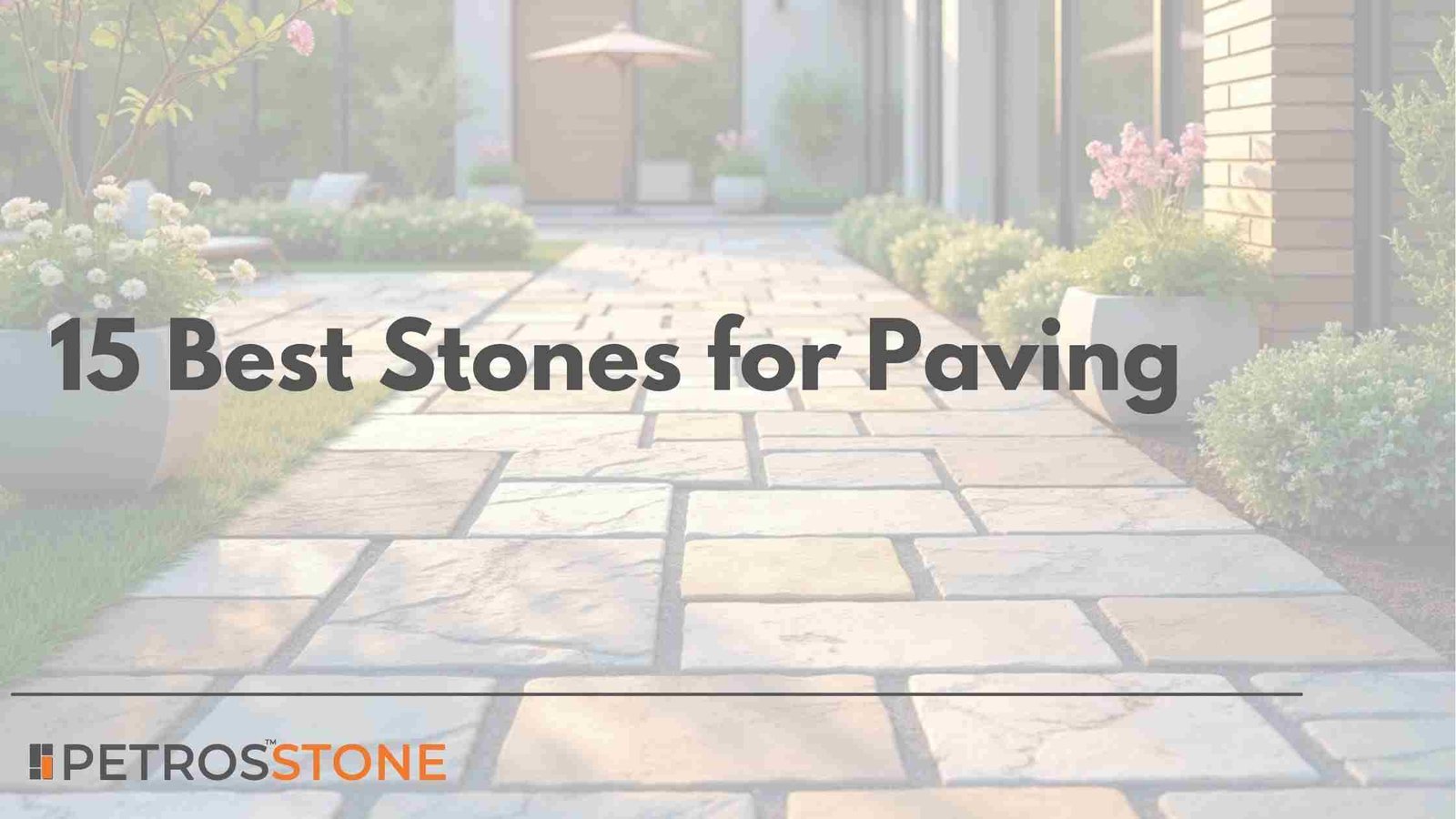
A building’s elevation is one of the first impression makers from afar, followed by interior spaces, unveiling the design language and establishing comfort. And when it comes to landscape design, it is as important in setting the stage for what lies within.
Other than the natural elements like plantation and water features composing a landscape design, it’s also about balancing nature with the right hardscape. That’s where picking the suitable paving stones for gardens and other outdoor spaces becomes critical.
Summarizing Paving Stones and Their Properties
| Paving Stone Type | Images | Visual Properties | Durability | Average Price |
| Flagstone |  | Natural flat slabs, uneven and rustic texture | Can withstand heavy foot traffic | USD 3-6 per sq ft. |
| Slate |  | Layered and slightly rough texture | Weather resistant | Typically costs between USD 2.5 to 5 per sq ft. |
| Sandstone |  | Surface with a fine-grained texture | Durable and has natural anti-slip properties | On average, priced between USD 2-5 per sq ft. |
| Granite | 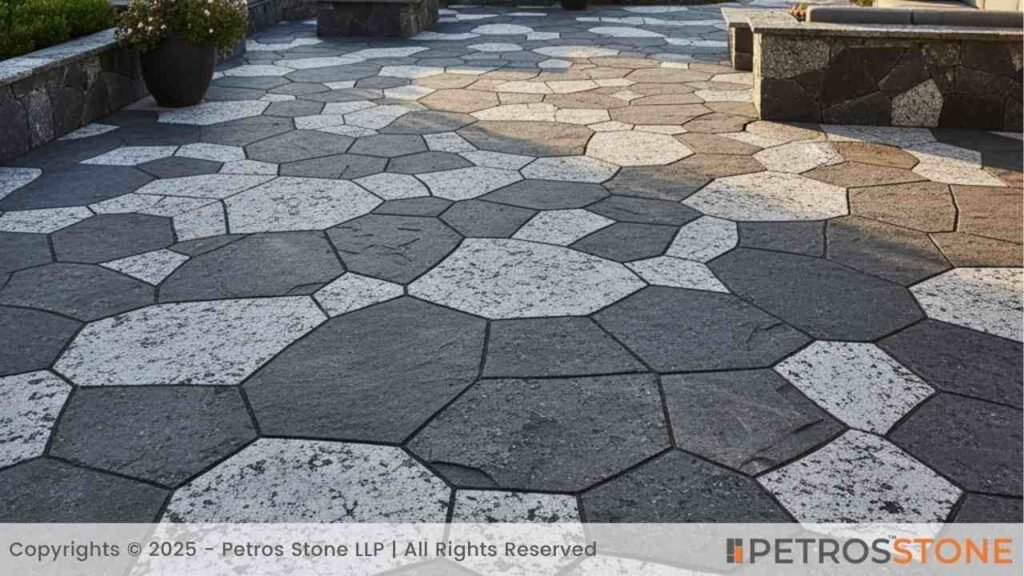 | Dense structure with multiple textured finishes | Sturdy, resistant to scratches, heat, and stains | Ranges from USD 4 to USD 8 per sq ft. |
| Limestone | 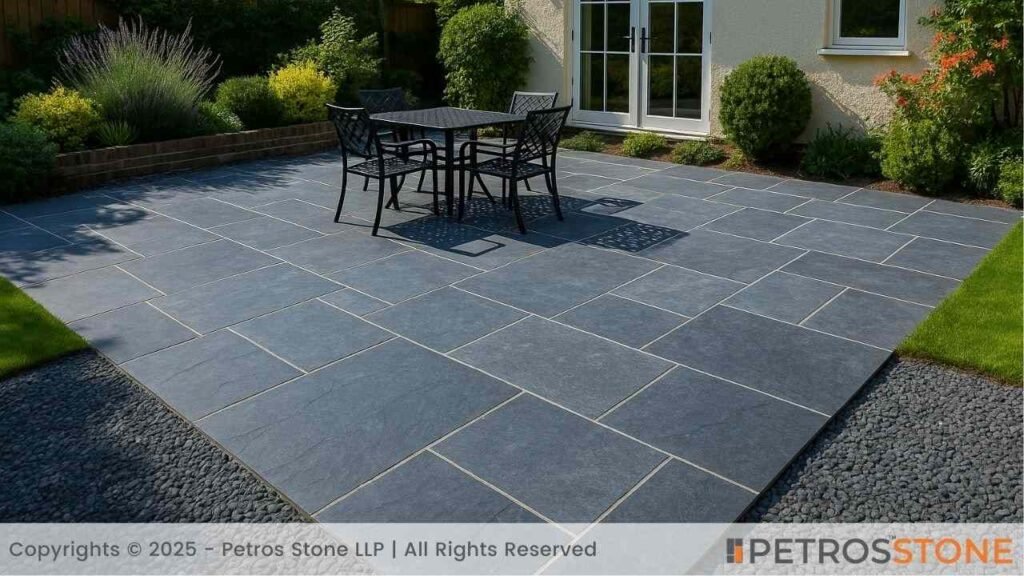 | A subtle riven texture | Weather resistant | An average cost of USD 2-4.5 per sq ft. |
| Marble | 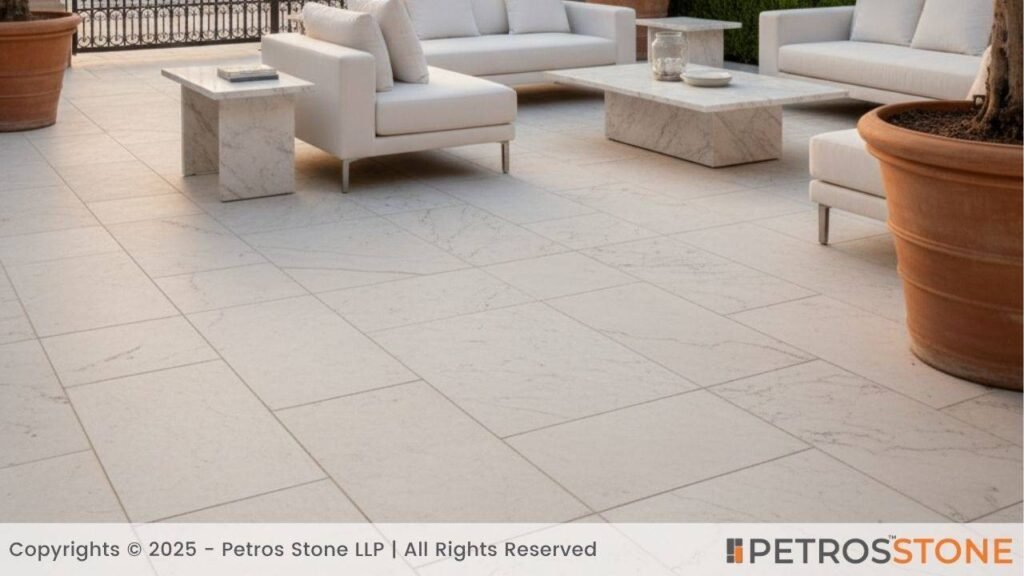 | Surface finishing ranges from polished to honed | Highly durable but may scratch under impact | Ranges from USD 5-10 per sq ft. |
| Cobblestone | 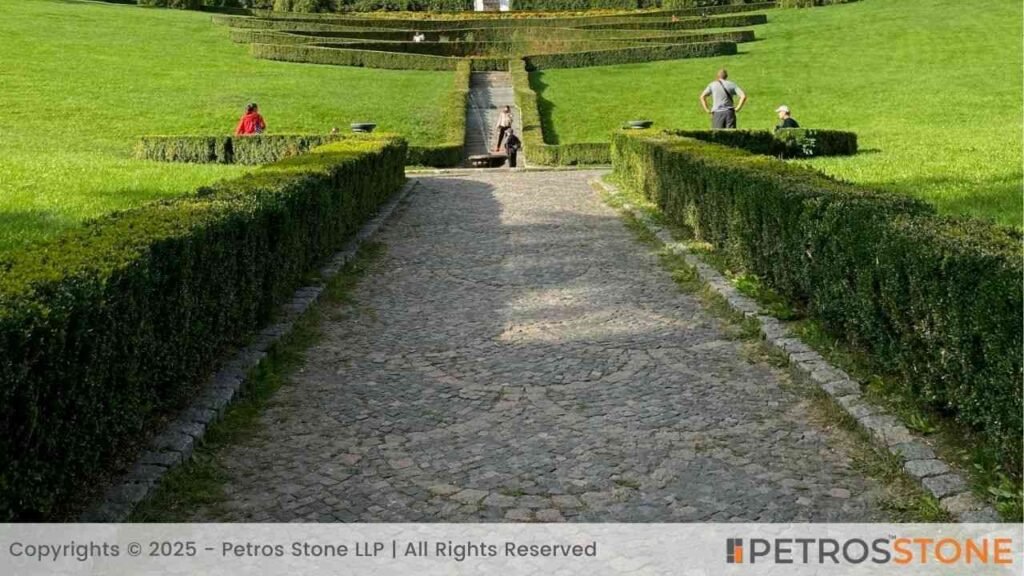 | Rough and tumbled | Very high durability even under vehicular traffic | USD 3.5-7 per sq ft. |
| Travertine | 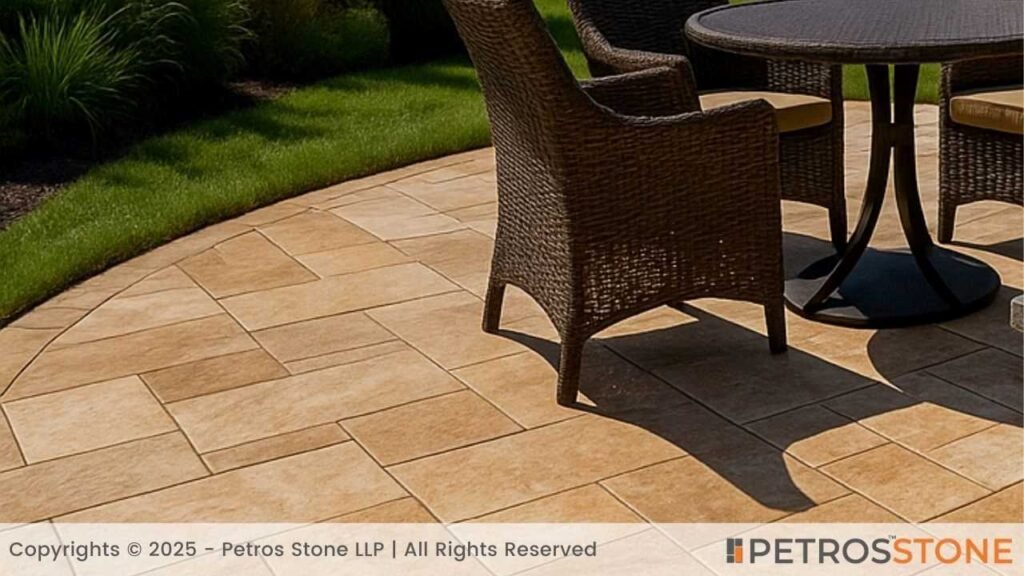 | A matte and patterned surface | Anti-slip properties and exhibit heat resistance | USD 4-8 per sq ft. |
| Concrete Pavers | 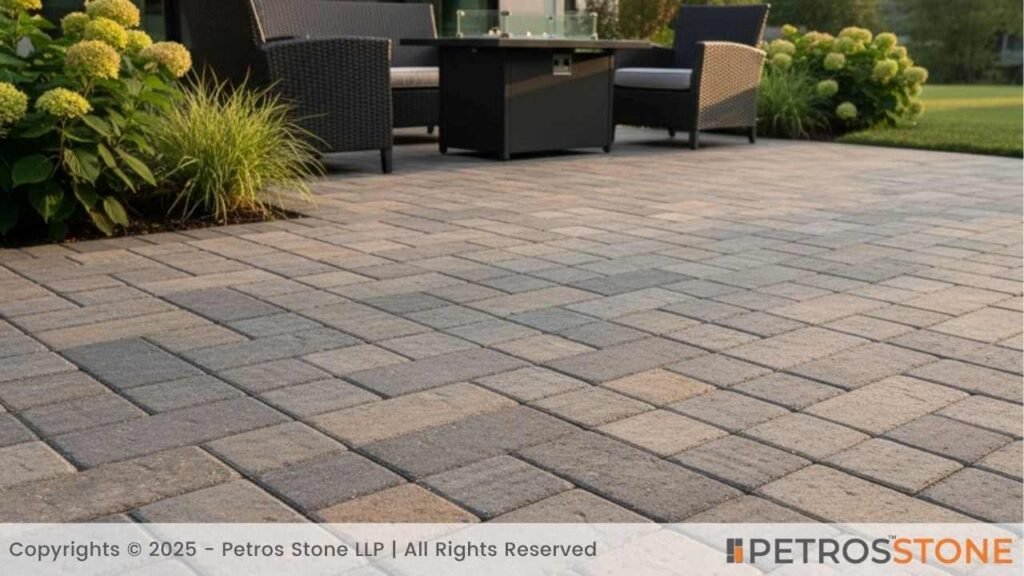 | Solid and uniform look | Highly durable and weather-resistant | USD 2-8 per sq ft. |
| Porcelain Tiles |  | Multiple textures and sizes | Low water absorption rate and highly durable | A bit high-end with cost ranging from USD 10-22 per sq ft. |
| Basalt | 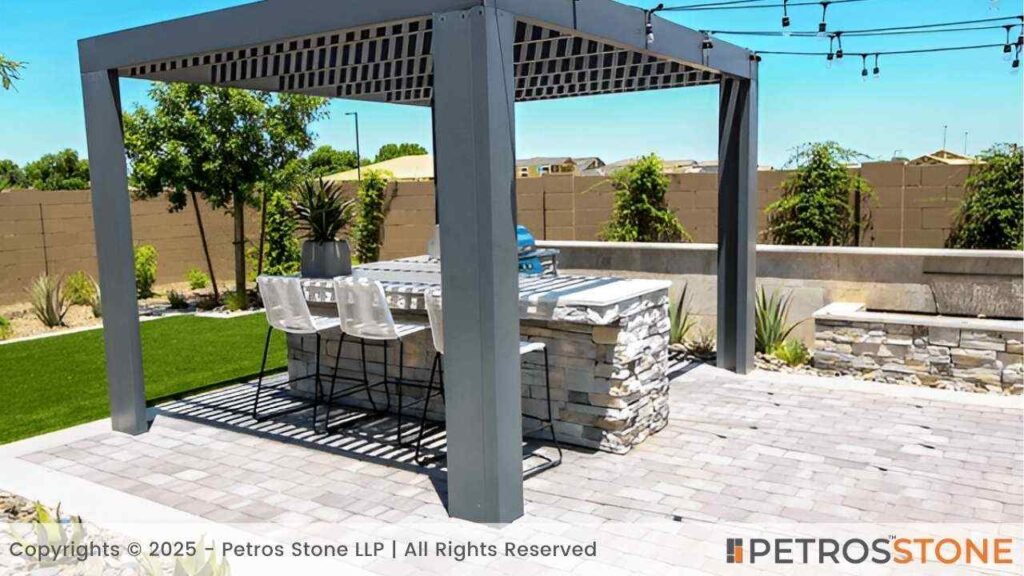 | Bold tones with a dense structure | Resistant to moisture, performs excellently under high driveway loads | USD 4-9 per sq ft. |
| Kota Stone | 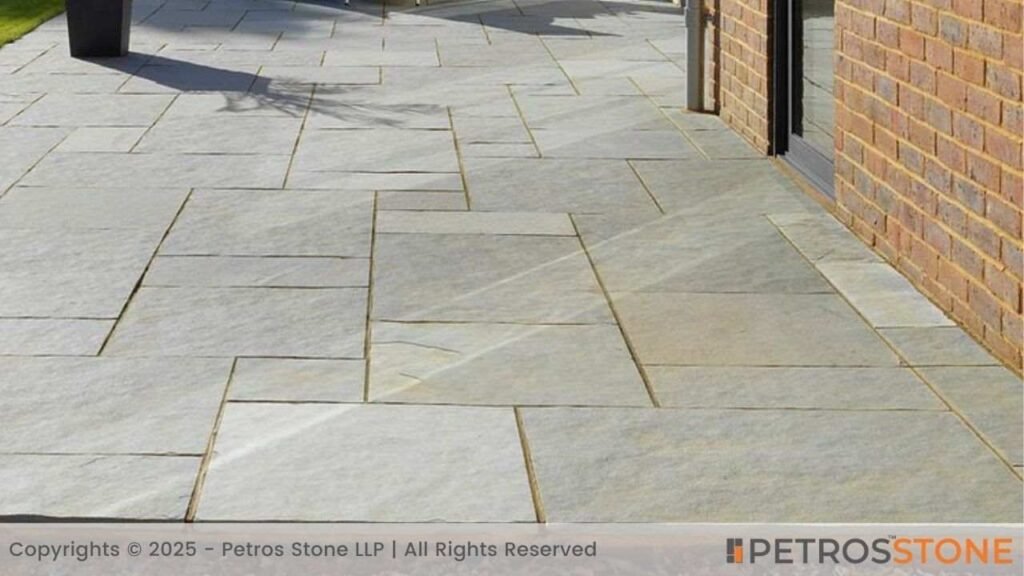 | Smooth to slightly riven surface | Weather and wear-resistant | USD 2-3.5 per sq ft. |
| Pebbles | 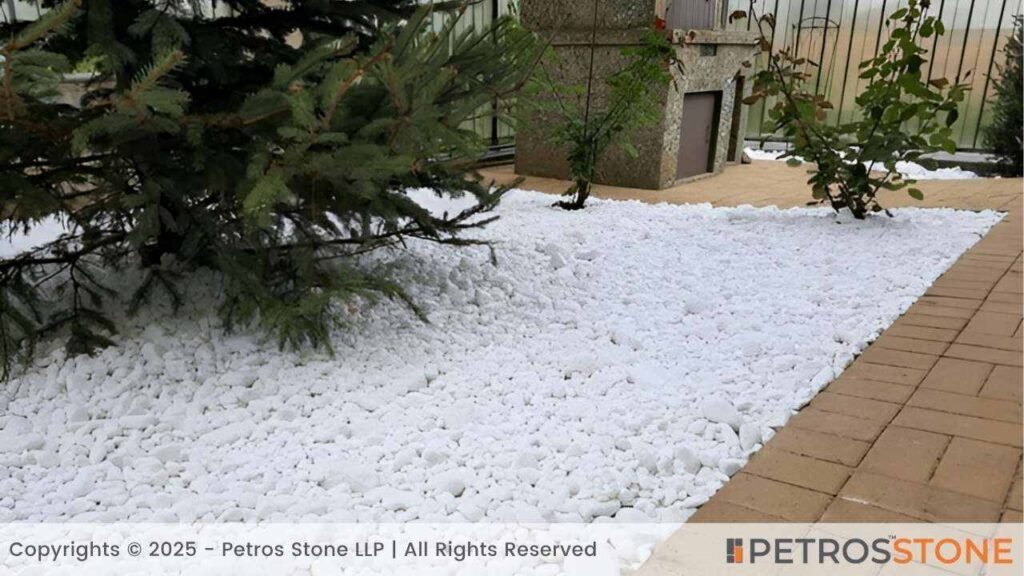 | Smooth, rounded, or flat | Durable and weatherproof | Affordable, with the price ranging between USD 1.5 to 3 per sq ft. |
| Quartzite |  | Crystalline and exhibits patterns | Extremely dense and hard | USD 5-9 per sq ft. |
| Crushed Granite | 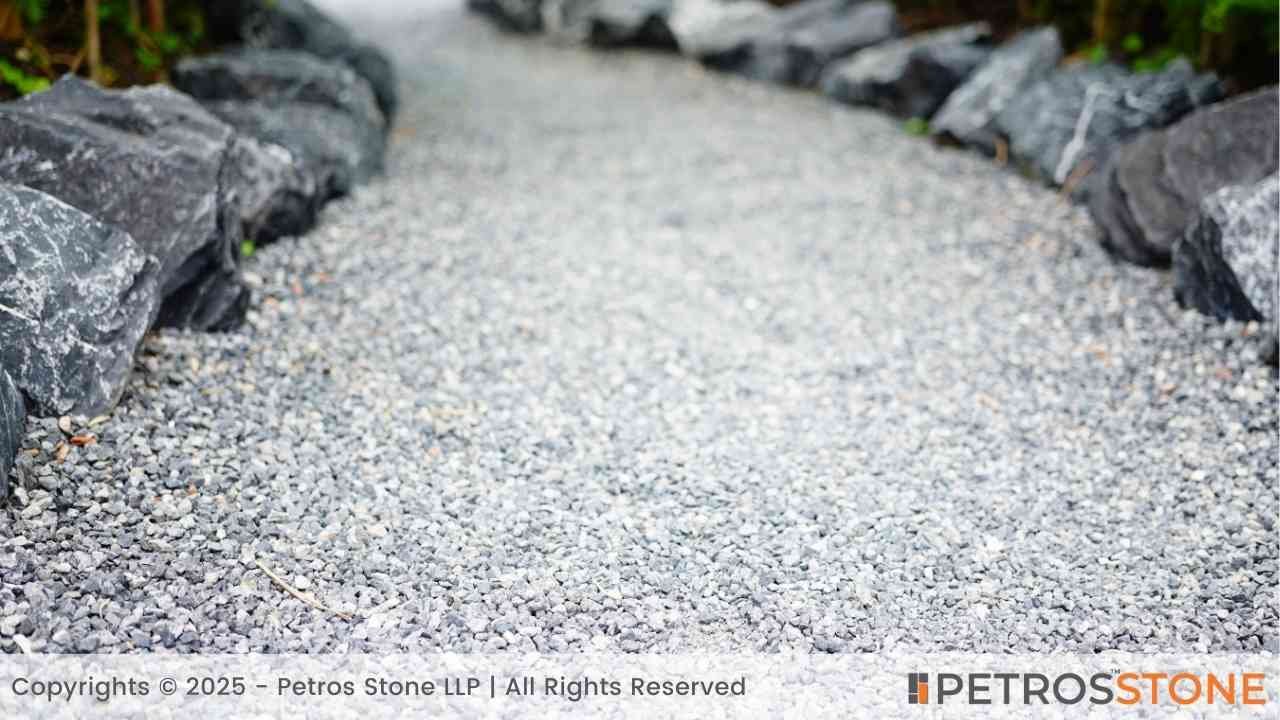 | Coarse and angular granules | Permeable and durable | USD 1-2.5 per sq ft. |
The choice of stone paving slabs helps define the aesthetics of the outdoor spaces. For example, while a polished grey granite may impart a modern touch, flagstone, on the other hand, keeps the design language rustic.
In this article, we explore the 15 best stones for paving and explore all about their properties, and learn how to pick the right stone for your space.
Here’s a list of 15 Best Stones for Paving:
- Flagstone
- Slate
- Sandstone
- Granite
- Limestone
- Marble
- Cobblestone
- Travertine
- Concrete Pavers
- Porcelain Tiles
- Basalt
- Kota Stone
- Pebbles
- Quartzite
- Crushed Granite
15 Best Stones for Paving
1. Flagstone

Have you ever come across an irregularly shaped paving pattern? A pattern with a mix of both stone and weeds in between?
That’s flagstone– a natural sedimentary rock that splits into flat slabs of varying shades, sizes, and textures. It comprises limestone, sandstone, and shale. Owing to the natural mineral diversity, flagstone gets its color, porosity, and texture.
Its texture and uneven slabs impart rustic aesthetics to seating areas, courtyards, and pathways. The real question is– what makes it popular despite the uneven sizes?
These paving stones for gardens allow weeds or grass to grow in between the gaps or joints. Based on your aesthetic pick, you may even seal it with a suitable joint filler. This design approach balances the natural elements, like the plantation, with hardscape stones.
This Indian stone paving is known to withstand extreme temperatures and foot traffic without exhibiting wear. Furthermore, the rough texture makes it slip-resistant, thus ideal for pool decks and patios.
2. Slate

Slate is one of the metamorphic rocks with a fine-grained structure. It primarily comprises shale, clay, and volcanic ash and offers a unique textured surface. As it comes in a range of muted shades and a layered foliation on its surface, slate is one of the popularly used paving stones for gardens.
But why pick slate as a paving stone?
It’s due to the functionality with anti-slip and weather-resistant properties. The distinctive visual appearance of this stone makes it ideal for courtyards, walkways, and patios following minimalist or contemporary design languages.
While the most common shades for slate are the hues of light and dark greys, for a few slabs, high iron oxide concentration leads to red or orangish colors. No two pieces of slate are uniform, and that’s what makes it an element of interest in the landscape design.
3. Sandstone

A popular sedimentary rock, sandstone is composed of fine sand grains cemented together over a period of time. This Indian stone paving is available in a plethora of tones and a natural texture.
The most popularly used sandstones for paving are Kandla grey, Mint sandstone, Rainbow sandstone, and Raj green. What makes it a popular pick for paving is its durability to withstand extreme weather conditions and a textured surface exhibiting anti-slip properties.
With earthy tones ranging from muted beige to bright red, every piece of these paving stones for gardens and driveways lends warmth to the design. It is one of the low-maintenance paving stones with the sturdiness to withstand high traffic as well.
4. Granite

Did you know that granite isn’t restricted to countertops alone?
It is often considered one of the hardest natural stone paving materials. Being an igneous rock, it forms from the slow crystallization of silica-rich magma. It results in a dense structure with a speckled visual appearance composed of mica, feldspar, and quartz.
Whether it’s a private residential project or a large public complex, granite is one of the designer’s go-to natural stone paving. With a wide variety of tones and natural patterns, it is one of the versatile Indian stone paving to complement diverse design languages.
Steel Grey, Tan Brown, Imperial Red, and Cats Eye granite are among the most popular paving stones amongst the other varieties.
Wondering why most people pick granite for their homes or public plaza designs?
It’s the ease of maintenance, cleaning, and resistance to heat, stains, and scratches, leading to the popularity of this material.
5. Limestone

Limestone is a common term for sedimentary rocks primarily composed of calcium carbonate. Commonly, these stones are available in tones like white, green, blue, yellow, and black. It is one of the affordable Indian stones for paving, offering a naturally riven textured surface.
As it’s formed from the compression over the years, it exhibits high compressive strength and is weather-resistant. This Indian stone paving is known for its eco-friendly properties with a lower carbon footprint as compared to synthetic paving options.
Limestone is comparatively soft. This property leads to an ease of working and makes it an ideal pick for intricate paving patterns. The most commonly used limestone pavings are Kota Blue, Kota Brown, Peacock, and white limestone. It is a perfect pick for outdoor spaces with Mediterranean or contemporary aesthetics.
6. Marble

We’ve all heard of marble, right?
Marble is one of the most sophisticated materials known to add hints of luxury to a space. This Indian stone paving is a metamorphic rock comprising dolomite and limestone. The recrystallization process, post-exposure to excessive pressure and heat, leads to the veining of marble.
It is highly preferred for its patterns and a wide range of colors, ranging from crisp white to bright red. Every piece of a marble paver exhibits a unique veining pattern. When it comes to the installation of marble paving stones, it demands skilled craftsmanship. Through the arrangement of veining patterns, interesting patterns can be formed for a one-of-a-kind design.
Marble is extremely durable, making it appropriate for heavy foot traffic zones like driveways and patios. Furthermore, the cool surface of this stone makes it an ideal paving choice for designs in hot climates.
7. Cobblestone

Cobblestone has been one of the popular paving materials since ancient times. These could be seen as paving stones for ancient towns and cities’ streets. Yet, owing to the timeless appeal, it continues to impart a classic touch to the landscaping for both modern and heritage designs.
These can be made from sandstone, basalt, or granite, with each type of stone exhibiting superior durability. It is an excellent pick for courtyards, driveways, or pathways prone to heavy traffic.
This natural paving stone comes in multiple surface finishes, with its textured surface adding depth to an outdoor space. With multiple shades to choose from, these compact stones can be used to generate an eye-catching paving pattern. Furthermore, cobbles aid in natural drainage as they possess permeable characteristics.
8. Travertine

Have you ever heard of a stone that stays cool even in the heat?
Travertine is a type of limestone formed by the geothermal heating of alkaline water. While it’s no newcomer in the construction industry, its existence dates back to the Ancient Egyptian sculptures.
This paving stone is known to add an earthy touch to any space through hues ranging from ivory to rich brown. Apart from the aesthetics, what makes travertine an excellent paving stone is its heat resistance. It literally keeps your outdoor areas comfortable during extreme temperatures by staying cool underfoot.
The anti-slip properties make it ideal for patios, pool decks, and other wet spaces. Travertine paving demands regular maintenance and sealing as it is a porous material, prone to staining.
9. Concrete Pavers

Concrete pavers are one of the budgeted choices with ease of installation and low maintenance demands. Casted in concrete, these are durable, practical, and versatile with their range of tones.
This paving material often follows an interlocking pattern, making it an ideal choice for projects on a tight timeline. Concrete pavers are ideal for pathways and driveways as they perform well under high load and weather exposure.
These stones can be used in a unique color combination for appealing aesthetics.
10. Porcelain Tiles

Porcelain pavers are a man-made material made by firing clay at extreme temperatures. The heating of the mix of clay, minerals, sand, and water results in a durable, weather-resistant, and non-porous material.
As these are artificially made, porcelain paving stones are available in a plethora of colors, textures, and sizes. From solid colored to slabs mimicking wood, cement, and natural stone, these engineered stones allow design experimentation while ensuring functionality.
The major advantage of adopting porcelain tiles for outdoor spaces is the low water absorption rate. It cuts down the chances of moss or mold growth and makes the maintenance easier. However, the key consideration with this material is the high installation cost.
11. Basalt

Basalt paving stone is known for its elegant visual appearance and high strength. Its bold tones, ranging from deep grey to black, make it ideal for modern designs.
It exhibits a dense structure, high durability, and naturally non-slip properties. Furthermore, this natural stone paving is resistant to water. Owing to the consistency in its color, it is an ideal pick for large-scale plaza pavings and driveways.
In order to minimize the monotonous appearance, basalt paving can be combined with metal accents or natural stone with a lighter shade.
12. Kota Stone

Are you tired of the outdoor paving stones constantly chipping or losing their authentic tones?
Opt for Kota stone.
This Indian stone paving is one of the most charming, practical, and affordable picks for outdoor spaces. Kota stone is known for its high durability and resistance to daily wear and tear. This property, along with the color versatility, makes it suitable for outdoor spaces like pathways, patios, and terraces.
And if you’re looking for soothing outdoor spaces with earthy tones, Kota stone colors range from browns to blue and green. One of the most critical concerns while selecting a paving stone is the maintenance demands. Kota stone demands a simple cleaning process with water and mild soap to retain its charm.
Periodic sealing of the stone surface helps minimize moisture permeability and stains.
13. Pebbles

Pebbles are one of the unique paving materials. These are one of the popularly used elements of landscape design known for their vibrant tones, smooth texture, and a sense of elegance.
From rounded to flat pebbles, pebbled paving is also used as a reflexology path. Their natural structure stimulates the pressure points, promoting wellness. Pebbles are highly durable, with excellent weather resistance. Its sturdiness promises maintained shape and charm over time.
Pebbles are considered a versatile paving material with a plethora of hues that can be used to complement different design languages. These are often used for lawn edging and pathways.
14. Quartzite

Quartzite is another metamorphic rock. It is formed by the heat and pressure of Earth’s crust on sandstone. As a result, an interlocked crystalline structure with high durability and resistance to weathering is formed.
When it comes to the color range, Quartzite exhibits a broad spectrum from soft white to ravishing red, green, pink, and gold. Its dense structural composition, along with non-porosity, makes it an ideal choice for paving stones.
However, it may demand periodic sealing as a preventive measure for staining from liquids. Owing to the sturdiness of the material, it demands professional installation. Quartzite is known to impart a sense of timeless aesthetics to the landscape design.
15. Crushed Granite

While large granite slabs don’t work for every paving design, this is where crushed granite comes into the picture. In this case, the granite is mechanically processed into small and angular pieces. It only affects the size of the granite, while retaining the natural properties like speckled aesthetics and durability.
Crushed granite can be used for commercial landscaping, public sidewalks, and as a dressing for planting belts. It helps impart unique aesthetics to the landscape design, while also minimizing water runoff as it aids in water permeability.
Paving Stones and Their Properties
| Indian Paving Stone Type | Images | Visual Properties | Durability | Average Price |
| Flagstone |  | Natural flat slabs, uneven and rustic texture | Can withstand heavy foot traffic | USD 3-6 per sq ft. |
| Slate |  | Layered and slightly rough texture | Weather resistant | Typically costs between USD 2.5 to 5 per sq ft. |
| Sandstone |  | Surface with a fine-grained texture | Durable and has natural anti-slip properties | On average, priced between USD 2-5 per sq ft. |
| Granite |  | Dense structure with multiple textured finishes | Sturdy, resistant to scratches, heat, and stains | Ranges from USD 4 to USD 8 per sq ft. |
| Limestone |  | A subtle riven texture | Weather resistant | An average cost of USD 2-4.5 per sq ft. |
| Marble |  | Surface finishing ranges from polished to honed | Highly durable but may scratch under impact | Ranges from USD 5-10 per sq ft. |
| Cobblestone |  | Rough and tumbled | Very high durability even under vehicular traffic | USD 3.5-7 per sq ft. |
| Travertine |  | A matte and patterned surface | Anti-slip properties and exhibit heat resistance | USD 4-8 per sq ft. |
| Concrete Pavers |  | Solid and uniform look | Highly durable and weather-resistant | USD 2-8 per sq ft. |
| Porcelain Tiles |  | Multiple textures and sizes | Low water absorption rate and highly durable | A bit high-end with cost ranging from USD 10-22 per sq ft. |
| Basalt |  | Bold tones with a dense structure | Resistant to moisture, performs excellently under high driveway loads | USD 4-9 per sq ft. |
| Kota Stone |  | Smooth to slightly riven surface | Weather and wear-resistant | USD 2-3.5 per sq ft. |
| Pebbles |  | Smooth, rounded, or flat | Durable and weatherproof | Affordable, with the price ranging between USD 1.5 to 3 per sq ft. |
| Quartzite |  | Crystalline and exhibits patterns | Extremely dense and hard | USD 5-9 per sq ft. |
| Crushed Granite |  | Coarse and angular granules | Permeable and durable | USD 1-2.5 per sq ft. |
Understanding the Types of Finishes and Their Application
Did you know that stone comes in different types of finishes? Picking the right surface finish is as important as choosing the right paving stones.
Let’s learn about the different types of natural stone finishes and their common use cases.
Flamed Finish
Flamed finish is a result of exposing stone to extreme heat and then cooling it immediately. It leads to a rough and textured surface. Flamed paving stones impart a rustic look to the stone.
This surface finish helps in retaining the color and characteristics of the paving stones. The texture on the stone’s surface makes it slip-resistant and ideal for pool deck areas and paving stones for the garden.
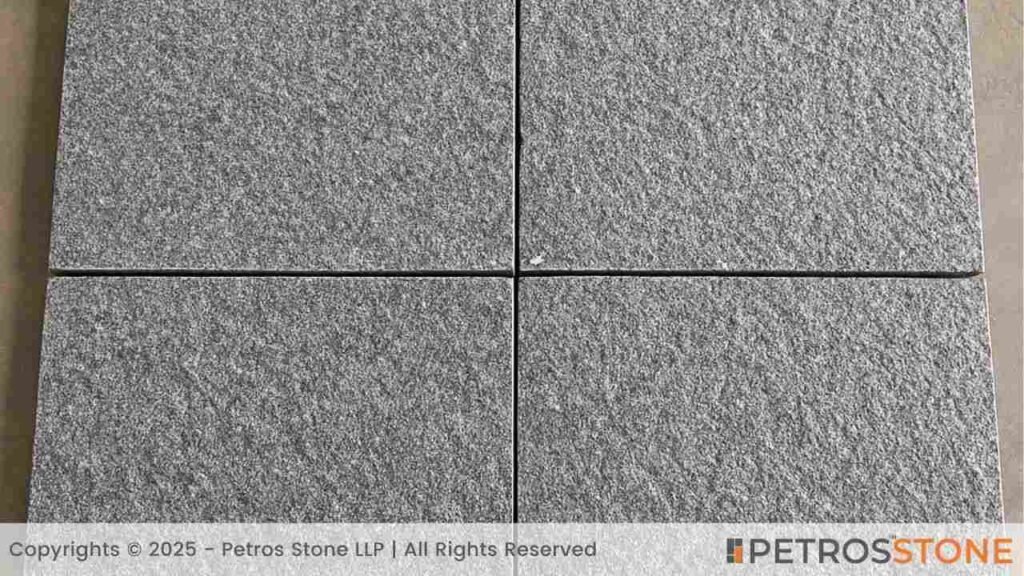
Polished Finish
Have you ever seen a flooring with an extremely glossy look and mirror-like reflection?
It’s a polished stone.
This is one of the most common stone surface finishes, where the grinding and buffing of a stone results in a sheen. It is often used to make the stone look sleek and more elegant.
One of the major advantages of a polished finish is the ease of maintenance. While the glossy finish enhances the natural veining and colors, it results in a slippery surface when wet. This is why polished paving stones can be used as part of a pattern. One must avoid laying the whole outdoor paving in polished stones.

Bush-hammered Finish
In this type of surface finish, a texture is created either with a hand tool or a machine. As a result, the paving stone becomes resistant to slipping and serves as an ideal material for high-traffic outdoor spaces.
The visual depth, in this case, makes a stone ideal for wall cladding as well. Most of the natural stones can be used in a bush-hammered finish.
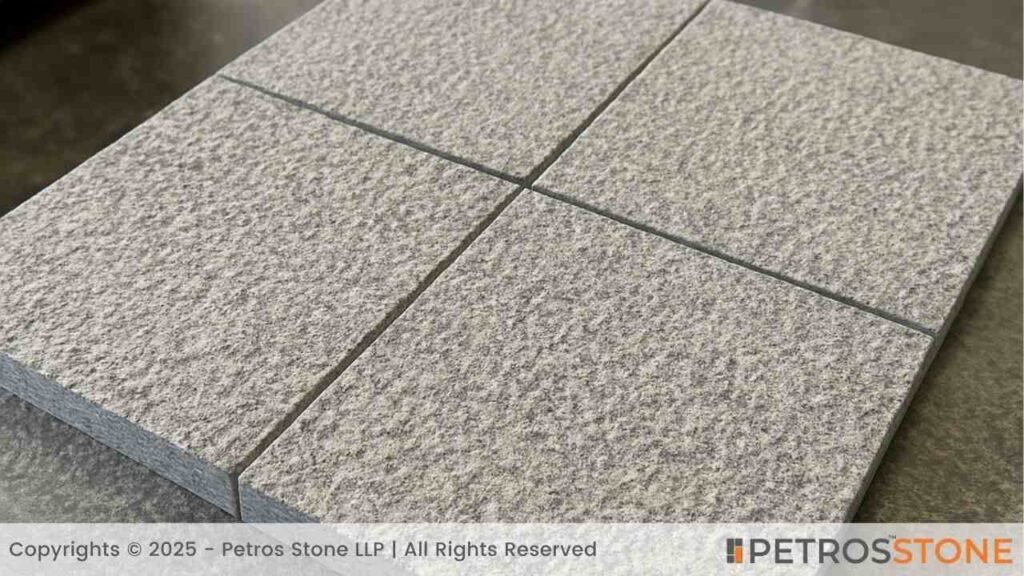
Brushed Finish
A brushed finish on paving stones for the garden is achieved by using an abrasive brush on the surface. It helps enhance the natural tones of the stone and leads to a slightly rough surface.
You can use this finish for stones in the wet areas like pool decks, open showers, and patios.

Shotblasted Finish
For shotblasting, metal grits are blasted on the paving stones. It results in a fine and granular texture. And owing to this finishing, the stone exhibits enhanced anti-slip properties.
You can add shotblasted stones for paving and driveways, as the textured surface ensures better grip and minimizes slipping accidents.
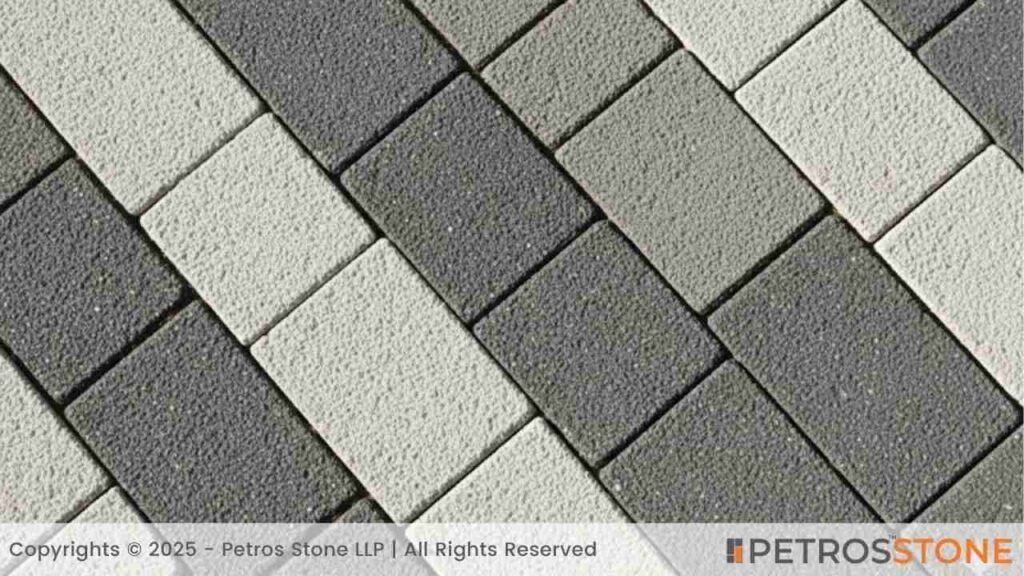
Honed Finish
Honed finish on paving stones often results in a matte look.
As the surface loses reflective properties, a honed finish often makes the daily wear and tear less noticeable. It is a great pick for high-traffic areas and patios.
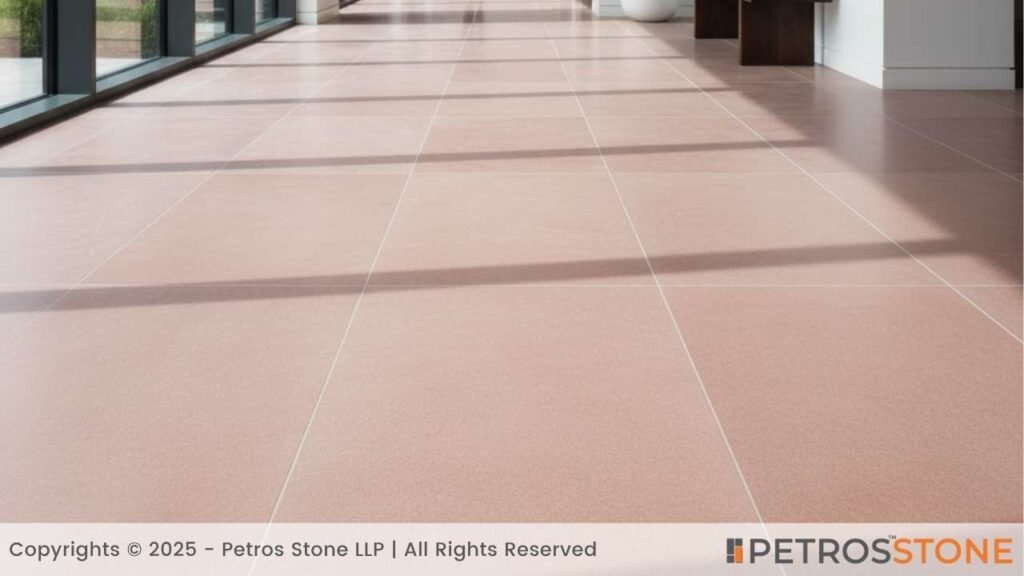
Lapatro Finish
In this case, a paving stone slab undergoes multiple finishing treatments, beginning with the brushing of the surface to polishing it, and again brushing it. Lapatro finishes result in a blend of both polished and honed surfaces.
It results in a rough yet smooth surface finishing, known to add elegance to a space. Designers commonly use this surface finishing for porches, stairs, and building entrances.
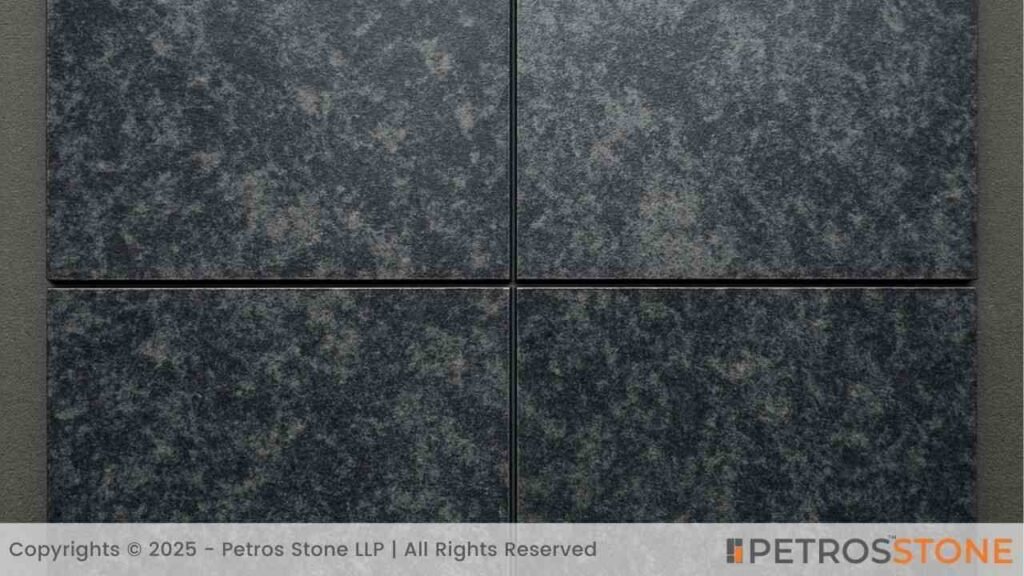
Sawn Finish
Sawn finish results in a slightly undulated paving stone surface. In this case, the natural stone is cut with diamond disc teeth. This finish leads to a matte finish and lightens the stone’s natural color.
It is suitable for landscape design elements like steps, driveways, patios, and pathways.
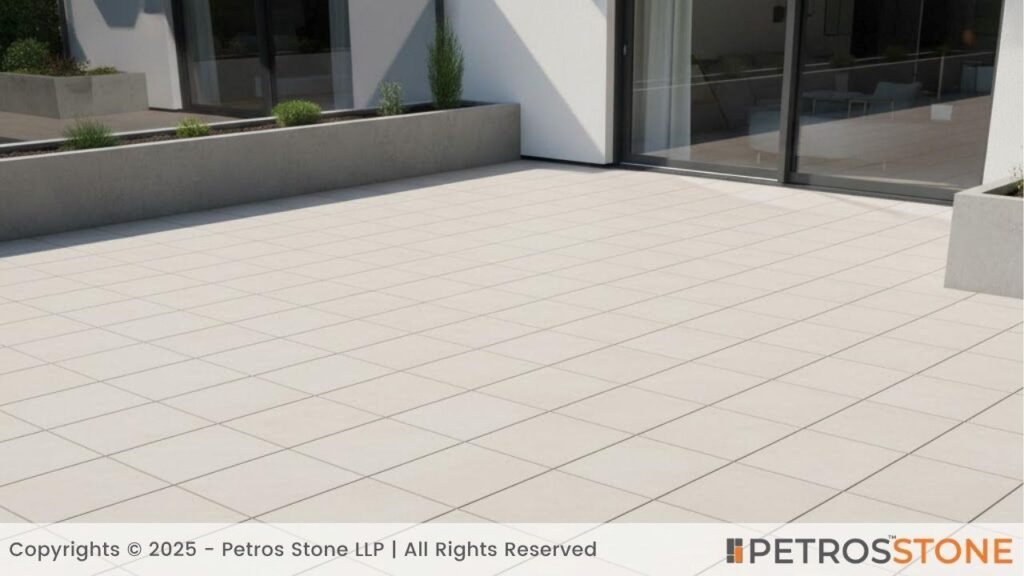
Sandblasted Finish
Often confused with a shotblasted finish, this finish leads to a very fine texture by blasting silica sand on the natural stone surface through an air gun.
It results in small holes with a slightly rough appearance, yet neat aesthetics. Sandblasted paving stones are ideally used for high-traffic area walkways and driveways, owing to their non-slippery surface. Furthermore, it’s also used in decorative paving patterns to offer a slightly matte look.
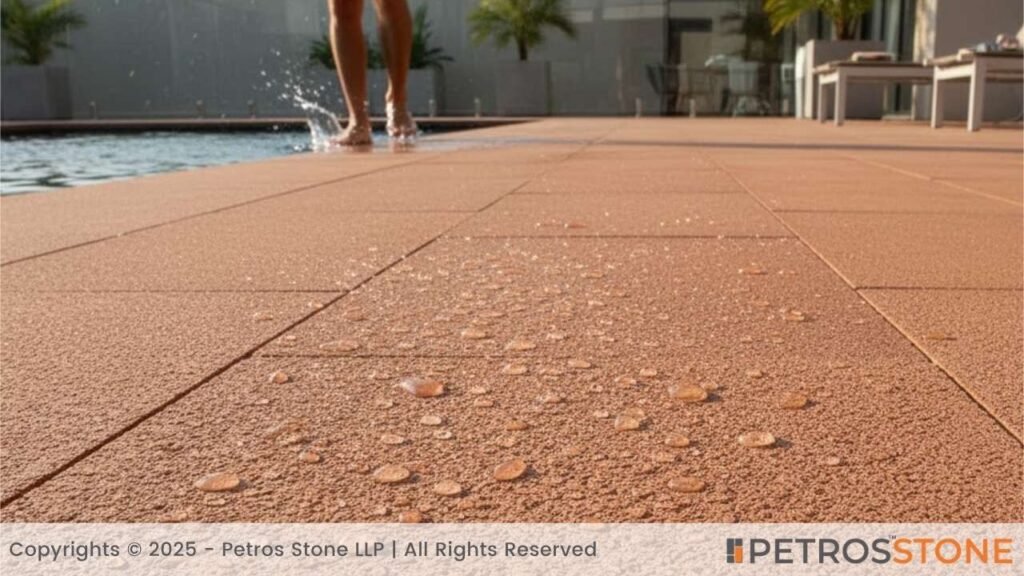
Points to Consider Before Choosing a Natural Stone Paving
Are you feeling overwhelmed by all the natural stone paving choices? Don’t worry, we’ve got you covered!
To make the selection process easier, here are the main factors you need to consider before making your final decision.
Sturdiness
When choosing paving stones for your gardens or driveways, strength is crucial. Examine different materials and their durability to avoid cracking, flaking, or wearing down the paving design.
Consider how brittle the material is and how well it can resist scratches.
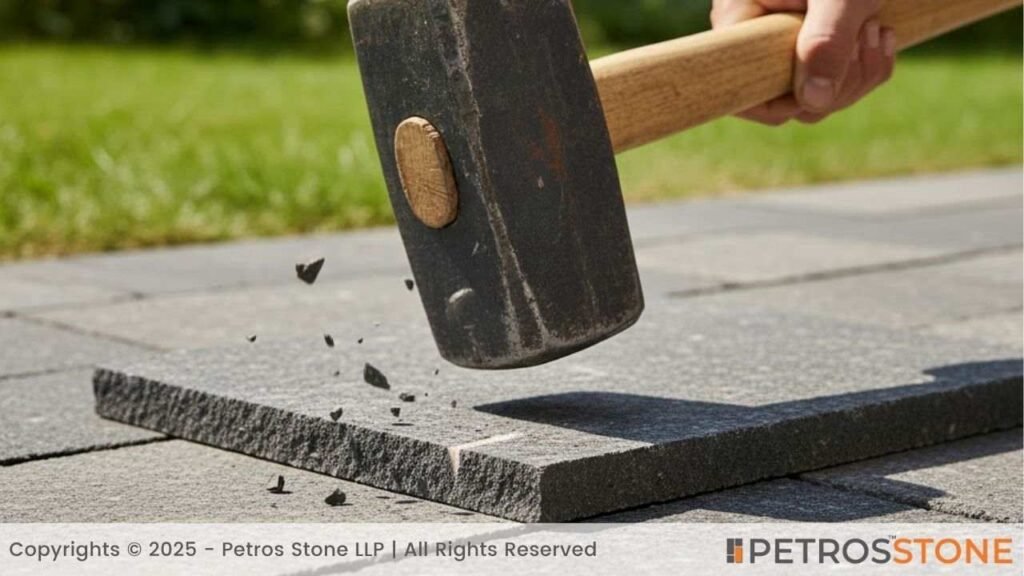
Performance Under Climate and Traffic
Apart from the material’s natural hardness factor, understand how each type of Indian paving stone performs under heavy traffic and climate. Assess the foot traffic of the space and then choose a paving stone accordingly.
For driveways, choose strong materials like basalt, cobblestone, or granite paving. For wet areas, such as pool decks and patios, consider using paving stones like flagstone or limestone.
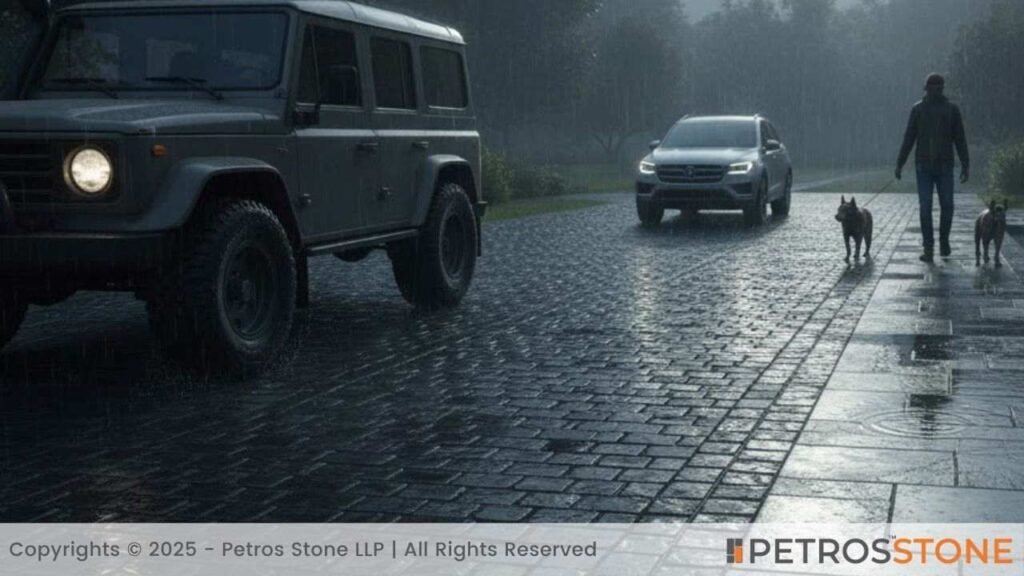
Porosity
A porous stone ends up absorbing water and exhibiting stains and cracks. Make sure to review the porosity of the paving stones for gardens, pool decks, and near water features.
Regular sealing of stones helps minimize the porosity issue and enhances the durability.

Stain Resistance
A few of the Indian paving stones are more prone to staining. Make sure to protect the surface by sealing it and following a regular cleaning and maintenance routine.
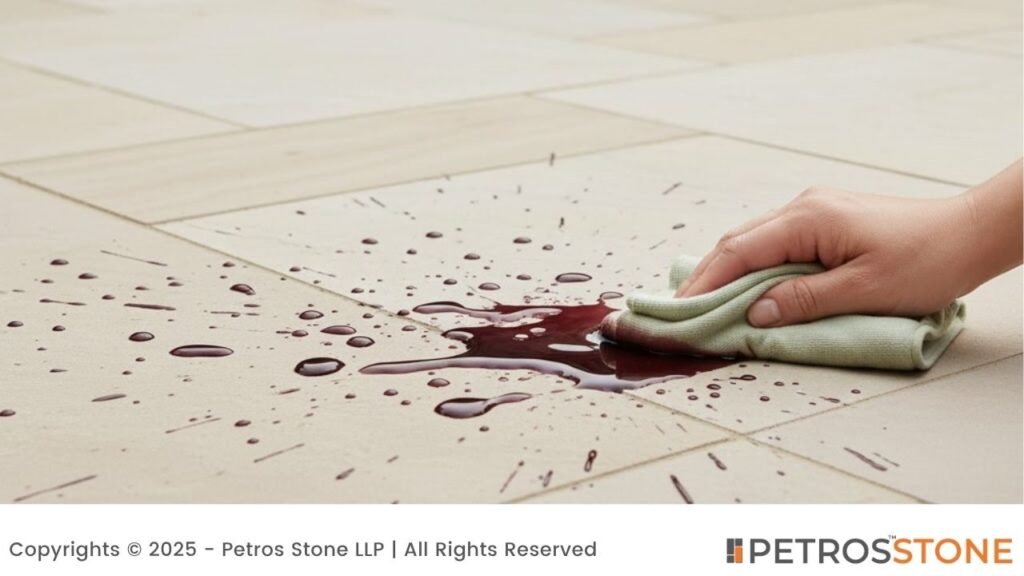
Tactility
Not every stone offers a smooth surface. Most of the paving stones offer flexibility in terms of surface finishing, ranging from a glossy look to a matte honed finish. Review the touch and feel of the stone and pick the one that seems more appealing and functional.

Colors
There’s no limit to the variety of tones when it comes to Indian paving stones. And not every color will complement your design. Make sure to select tones that work well with the curated design language. Aim at establishing a balanced landscape design.
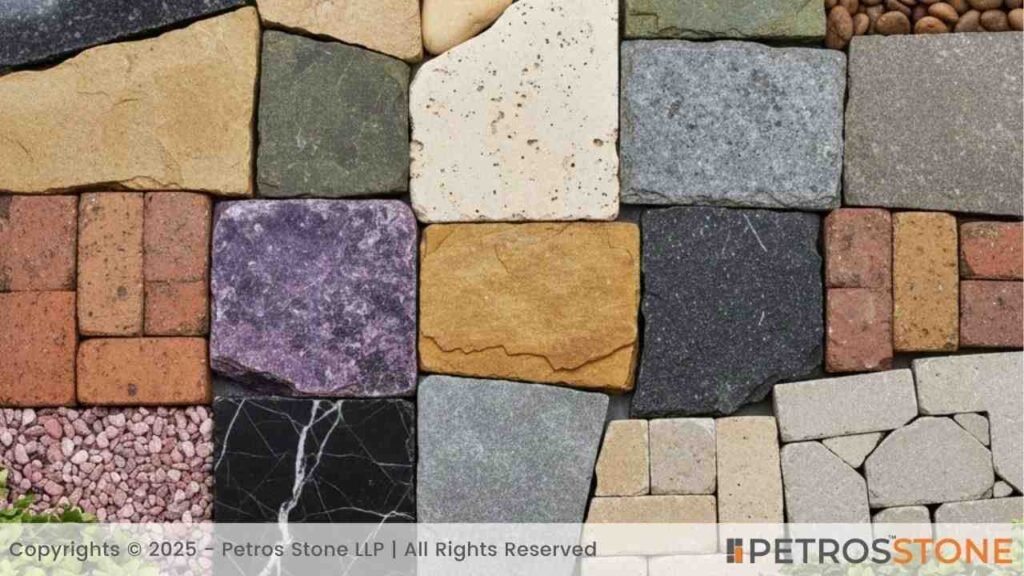
Pattern
Every natural stone, and each slab of that stone, comes in a unique pattern. Review the unique patterns and pick the best match that suits your aesthetics.
For example, natural stones are often used to add an authentic character to the space, porcelain pavers or concrete pavers, on the other hand, may be used for a uniform pattern.

Price
One of the most critical aspects to consider before selecting paving stones for your garden or other outdoor spaces is the cost. Set an estimated budget before picking the paver stone. It helps shortlist options that suit your budget.
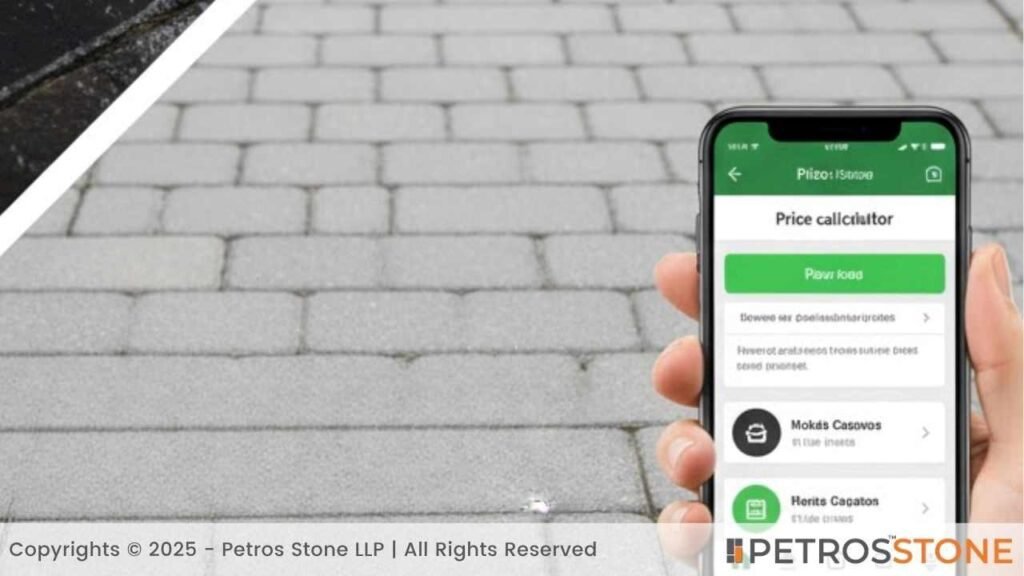
Summary
Picking the right paving stones for your outdoor spaces helps curate an experience. From the functionality to aesthetics to balancing hardscaping with nature, it lends an authentic identity to the design.
When it comes to finalization of the stone, make sure to prioritize durability, complement the design language, factor in maintenance, and suit your aesthetics while picking the paving stone.
Other than doing it on your own, you can also seek professional guidance to ensure beauty with longevity for your landscape design projects. Are you ready to transform your outdoor space into an unforgettable experience? Connect with our stone experts to find your best Indian paving stone match!
Key Takeaways
- Choose based on functionality: For high-traffic areas, opt for durable stones like granite, basalt, or cobblestone; for pool decks or patios, go with flagstone, limestone, or travertine due to their slip-resistant surfaces.
- Balance aesthetics and practicality: Natural stones such as marble, slate, and quartzite bring visual elegance, while concrete and porcelain pavers offer a uniform modern look with minimal upkeep.
- Finish matters: Select finishes wisely—flamed, brushed, or bush-hammered surfaces enhance grip, while polished or lapatro finishes add luxury to limited zones.
- Maintenance and sealing are crucial: Regular cleaning and sealing enhance stain resistance, reduce porosity, and prolong the life of outdoor paving stones.
- Set a clear budget: Stone prices range from USD 1.5 to 22 per sq. ft., so align your material choice with design intent, durability needs, and long-term maintenance costs.
Feel free to get in touch for a free consultation, quote, and get a detailed understanding from our experts here at Petros®. Visit https://petrosstone.com/ or call +91-8446360361 and WhatsApp

Hello!
I’m Tanika, an architect and writer, blending design expertise with a passion for storytelling. At Petros Stone, I help readers navigate through the complex material choices and empower them to craft well-informed and beautiful spaces through natural stones.
Brown Granite
White Galaxy Granite
Blue Bahia Granite
Silver Cloud Granite
Black Pearl Granite
Dallas White Granite

